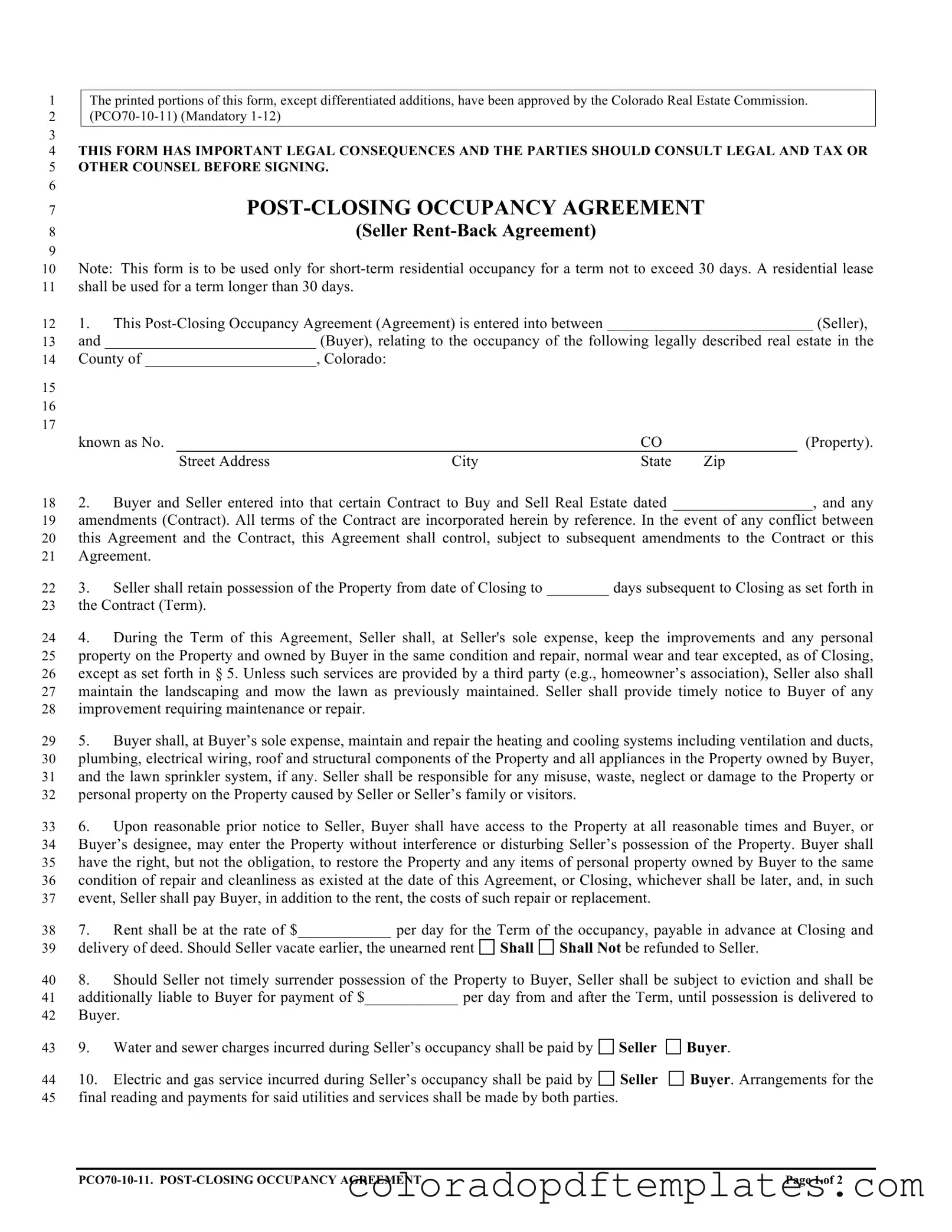What is a Colorado Post Closing Occupancy Agreement?
A Colorado Post Closing Occupancy Agreement is a legal document that allows the seller to remain in the property for a short period after the sale has closed. This agreement is typically used for a term not exceeding 30 days and is often referred to as a seller rent-back agreement.
Who should use this agreement?
This agreement is ideal for sellers who need extra time to move out after closing the sale of their home. It provides a temporary solution, allowing sellers to stay in the property while they finalize their moving plans. Buyers may also find this arrangement beneficial if they want to avoid a gap between moving out of their current home and moving into the new one.
What are the main responsibilities of the seller during the occupancy period?
During the occupancy period, the seller must:
-
Maintain the property in good condition, except for normal wear and tear.
-
Take care of the landscaping and lawn maintenance unless a third party handles it.
-
Notify the buyer of any necessary repairs or maintenance issues.
What costs are associated with the occupancy agreement?
The seller is typically responsible for paying rent during the occupancy period, which is agreed upon in advance. Additionally, the seller may need to cover utility costs, such as water, sewer, electric, and gas, incurred during their stay. The agreement will specify who pays for these services.
What happens if the seller does not vacate the property on time?
If the seller fails to vacate the property by the agreed-upon date, they may face eviction. The seller could also be liable to the buyer for additional daily rent until they surrender possession of the property.
Is a security deposit required?
Yes, the agreement typically requires a security deposit, the amount of which is specified in the document. This deposit is held by the buyer until the seller vacates the property and is disbursed according to Colorado law.
Can the seller make changes to the property during the occupancy period?
Generally, the seller should not make any significant changes to the property without the buyer's permission. Any alterations or repairs should be communicated and agreed upon in advance to avoid misunderstandings.
What if the seller wants to leave before the end of the occupancy term?
If the seller vacates the property earlier than planned, the agreement will outline whether any unearned rent will be refunded. It's essential to clarify this point in the agreement to avoid confusion later.
Do both parties need to maintain insurance during the occupancy period?
Yes, both parties should maintain insurance during the occupancy. The seller may need a renter's policy for their personal property, while the buyer should have homeowner's insurance. The agreement may require proof of insurance from both parties.
What should parties do if they have disputes regarding the agreement?
If any disputes arise related to the agreement, the document specifies that the prevailing party may be entitled to recover reasonable costs, including attorney fees. This clause encourages both parties to resolve issues amicably, but it also provides a legal recourse if necessary.
